If you are visiting Siem Reap, then you are most likely here to explore the ruins of Angkor Wat. While it could take weeks to thoroughly explore all the temples throughout the complex, the highlights can be tackled within two days time.
It almost seems surreal when you first step foot on the lost city of Angkor, the capital site of the Khmer Empire from the 9th to 15th century. Covering over 154 square miles with hundreds of monuments that contain more stone than the Egyptian pyramids, it is centered around Angkor Wat, the largest religious monument in the world.
With the popularity of the temples nowadays, it can be somewhat disappointing to share them with thousands of other visitors, particularly when you are trying to snap photographs with unobstructed views. To explore this ancient city without fighting through the crowds, you need an expert. I enlisted in the expertise of a local. Enter Kimrom Ran, or Kim for short, who says her playground as a child was Angkor Wat. An official tour guide since 2007, Kim has a great passion for her country and the history of Angkor. Transportation can be arranged according to group size and itineraries customized based on personal preferences. Rather than try and select which temples to explore over a two-day period, we left the planning up to the expert and followed her suggested itinerary.
We kicked off our two-day journey by visiting the most popular of the temples, Angkor Wat. Arriving at the back entrance located on the eastern side of the complex, we proceeded along a tree-lined, dirt road Angkor locals, aka the monkeys, were swinging from trees. At the end of the road lay Angkor Wat, its grandeur unlike anything I’d ever seen.
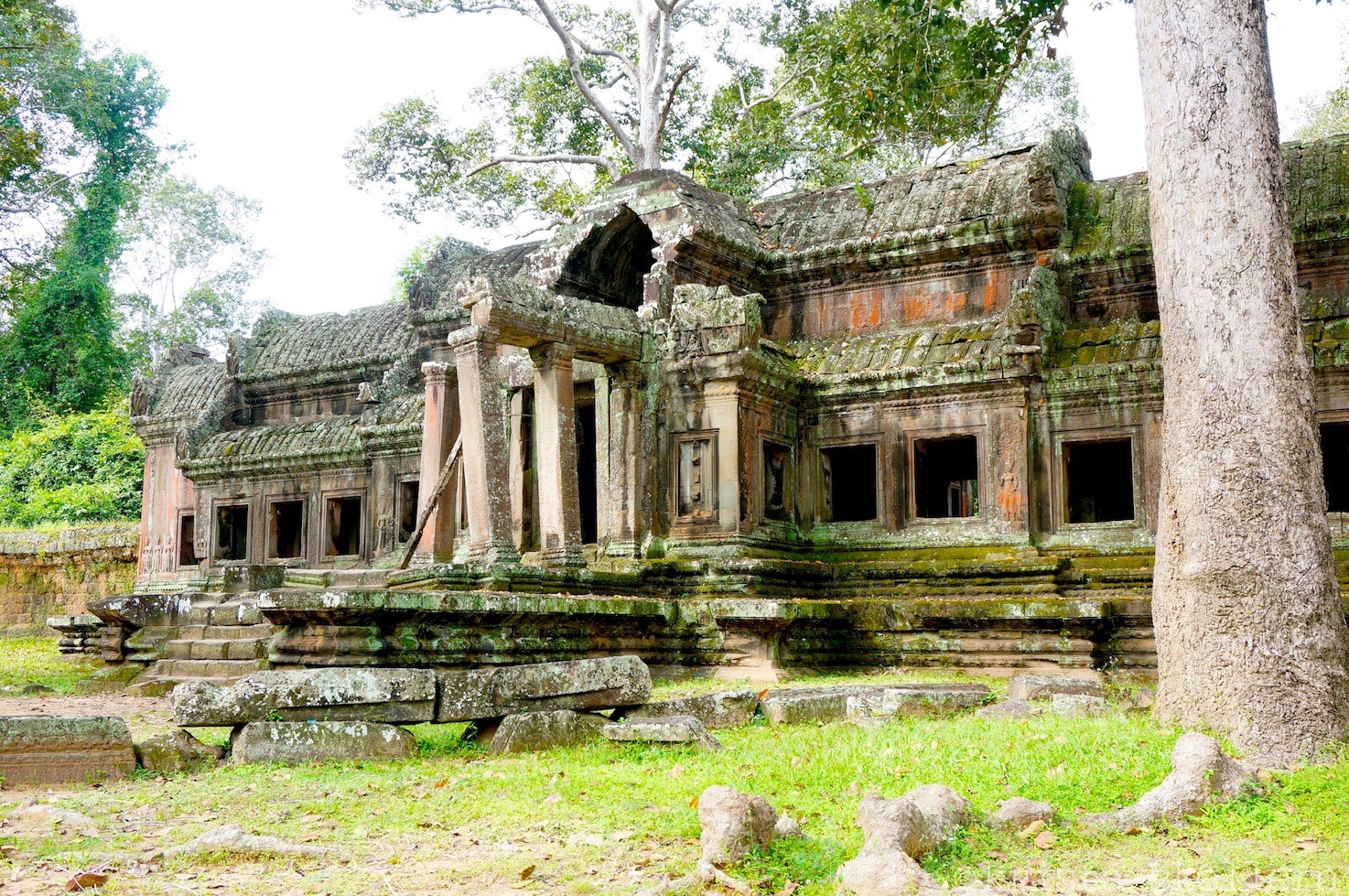
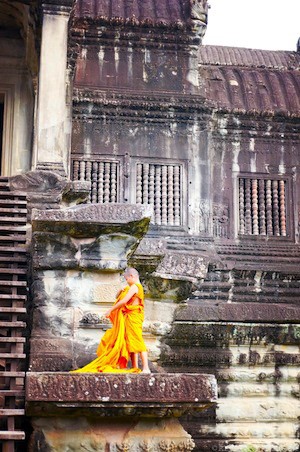
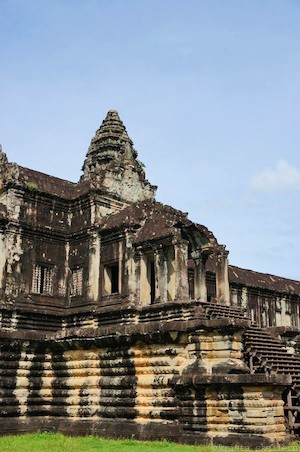
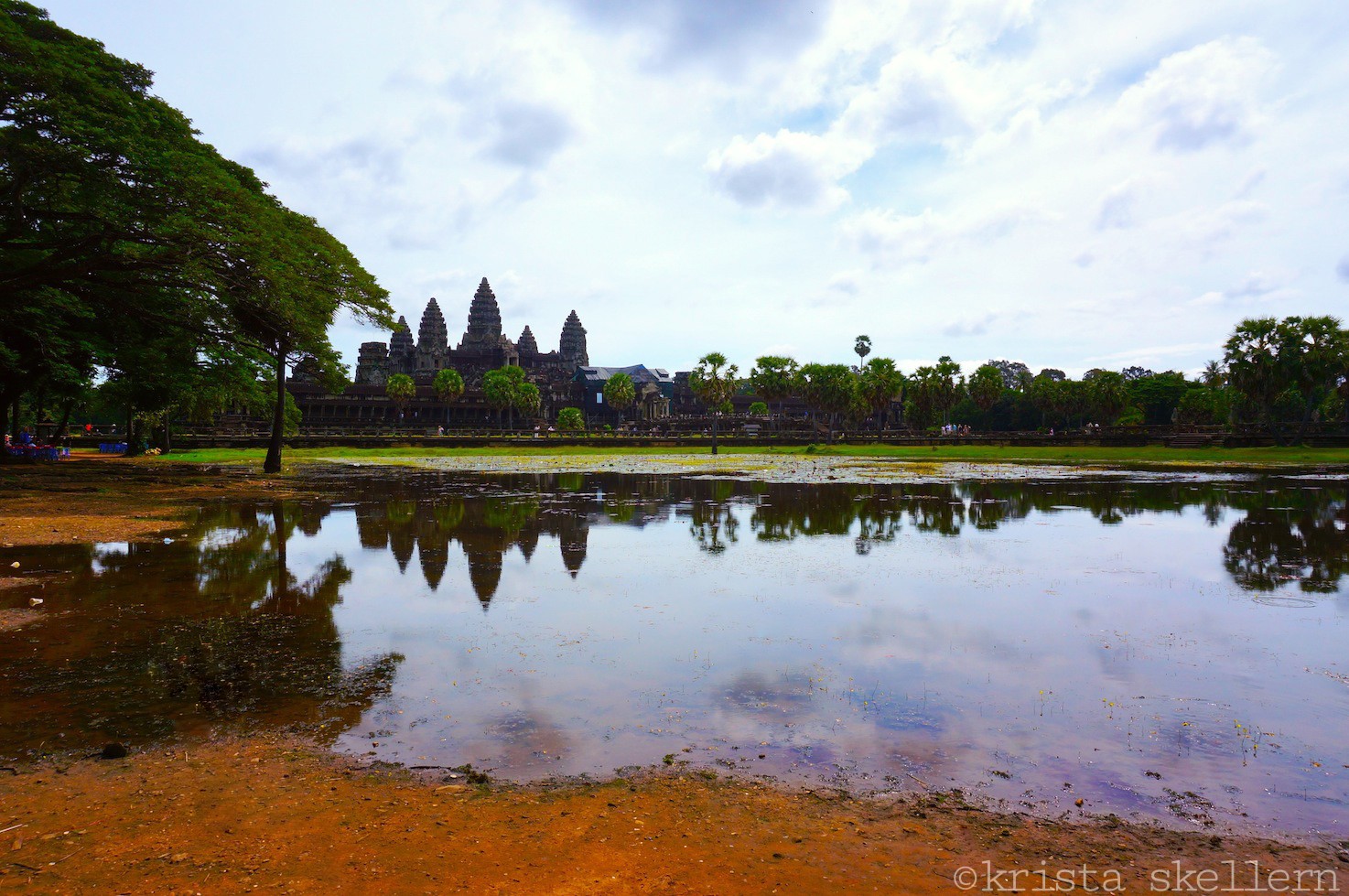
Next stop was Ta Prohm. As we approached, the temple stood in an almost eerie setting hidden inside the Cambodian jungle. Built in the late 12th and early 13th centuries by Khmer King Jayavarman VII as a Mahayana Buddhist monastery and university, the Bayon style temple has been left in much the same condition as which it was originally found. Trees growing over the moss-covered ruins create a picturesque setting in the jungle. It is no wonder this temple is one of the most visited complexes in the Angkor region. Ta Prohm was added to the UNESCO World Heritage List in 1992.
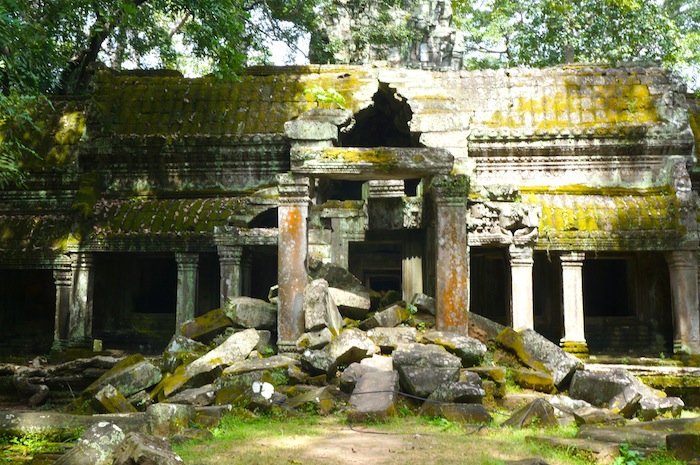
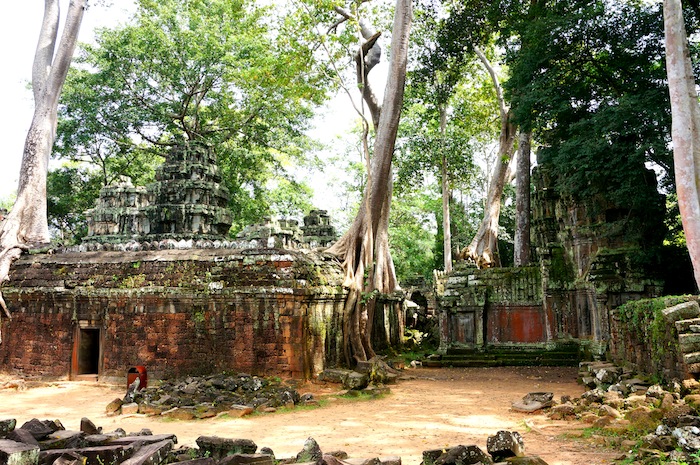
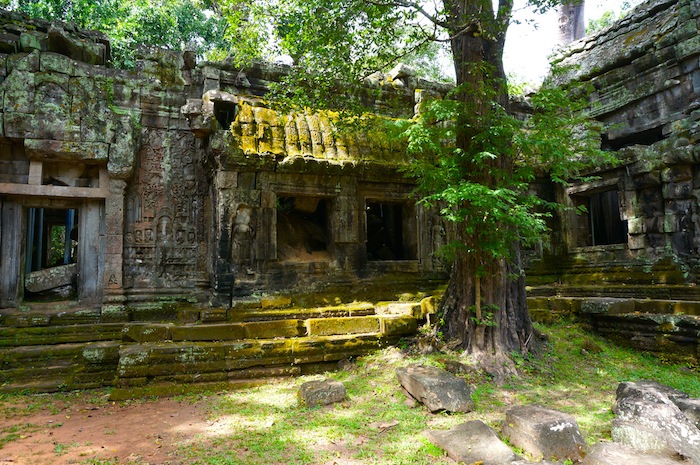
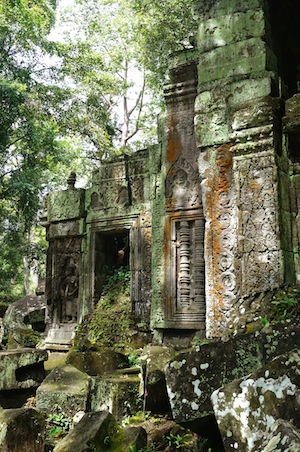
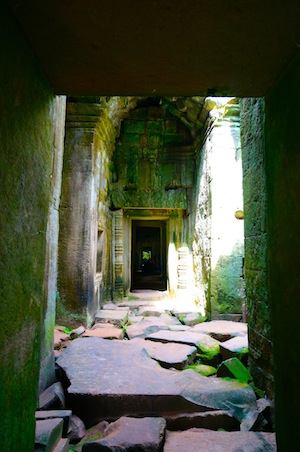
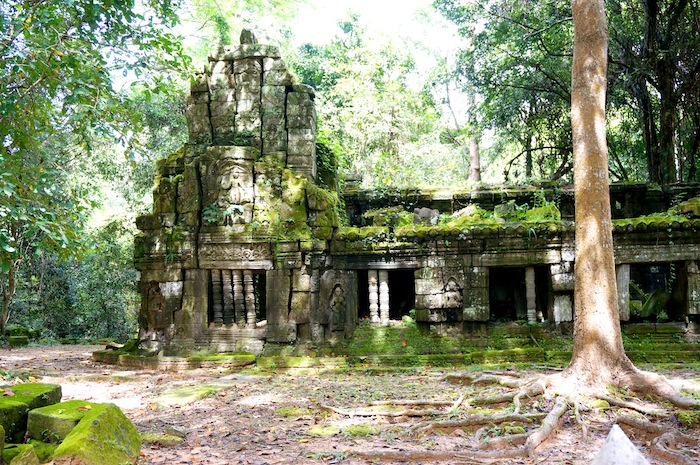
Located about 23 miles north of Angkor Wat lies the pink sandstone temple Bantãy Srĕi, which means Citadel of Women. Built in the 10th century, it is speculated that the name is derived from the numerous carvings of devatas, or dancing female deities, on the temple walls.
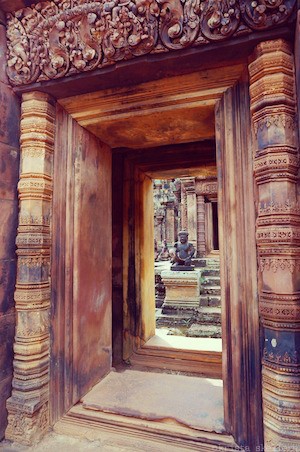
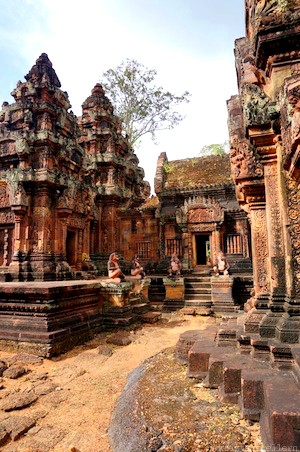
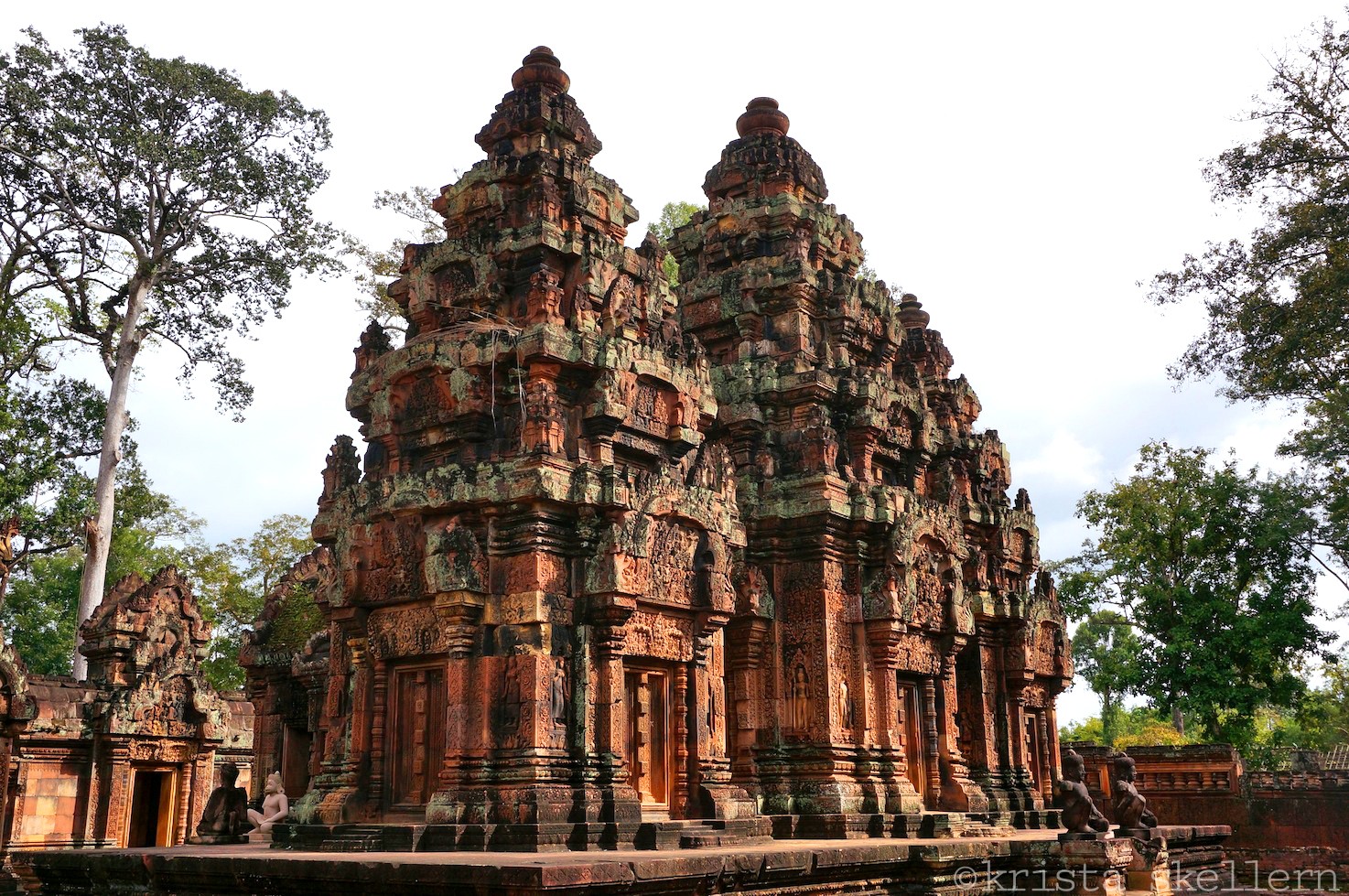
Day two began with a visit to Angkor Thom, established by King Jayavarman VII, it served as the last capital of the Khmer empire. At the heart of the city center lies Jayavarman’s state temple, the Bayon. Following Jayavarman’s death, the Bayon was modified and augmented by later Hindu and Theravada Buddhist kings according to their own religious preferences. Angkor Thom is known for the giant faces carved into the stone towers.
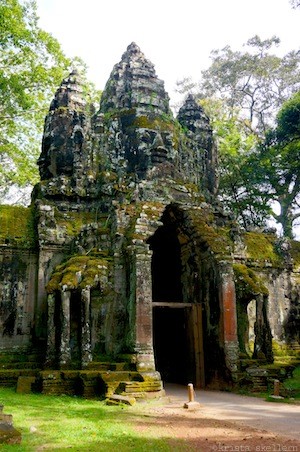
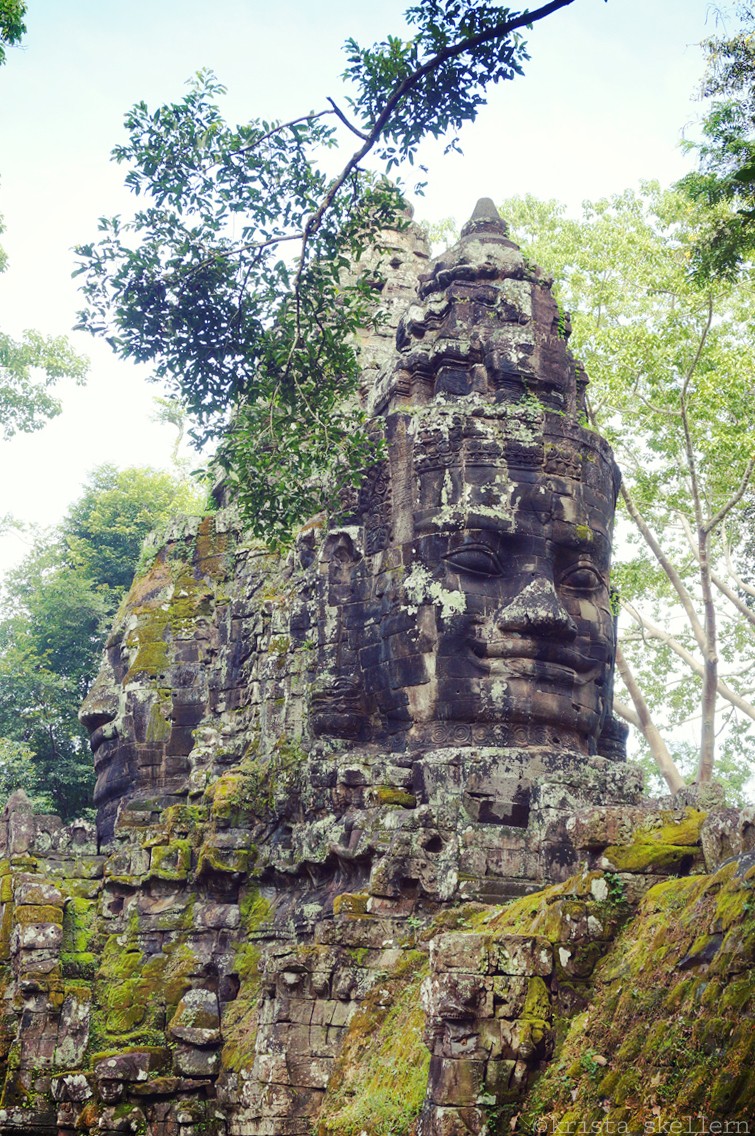
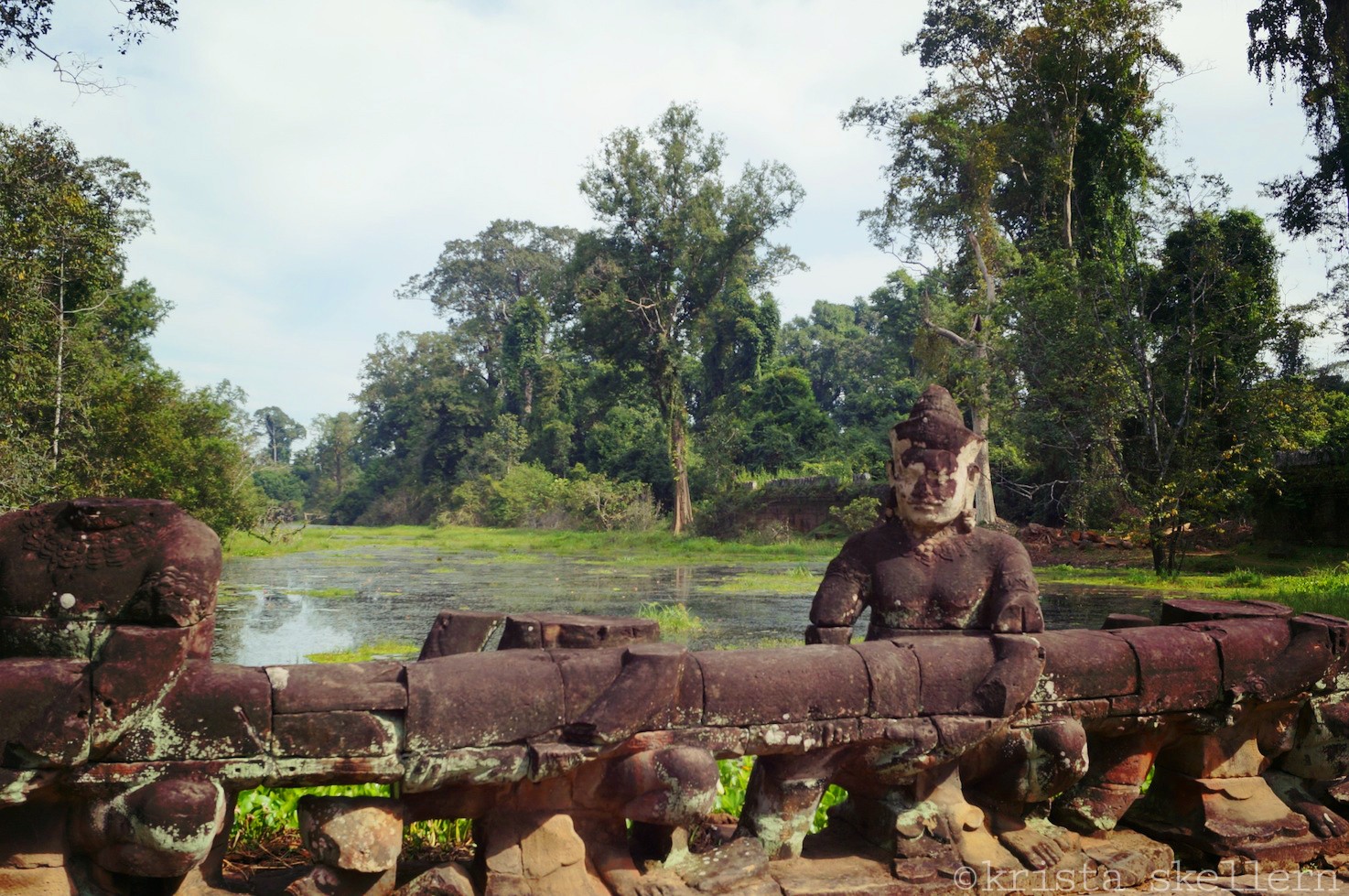
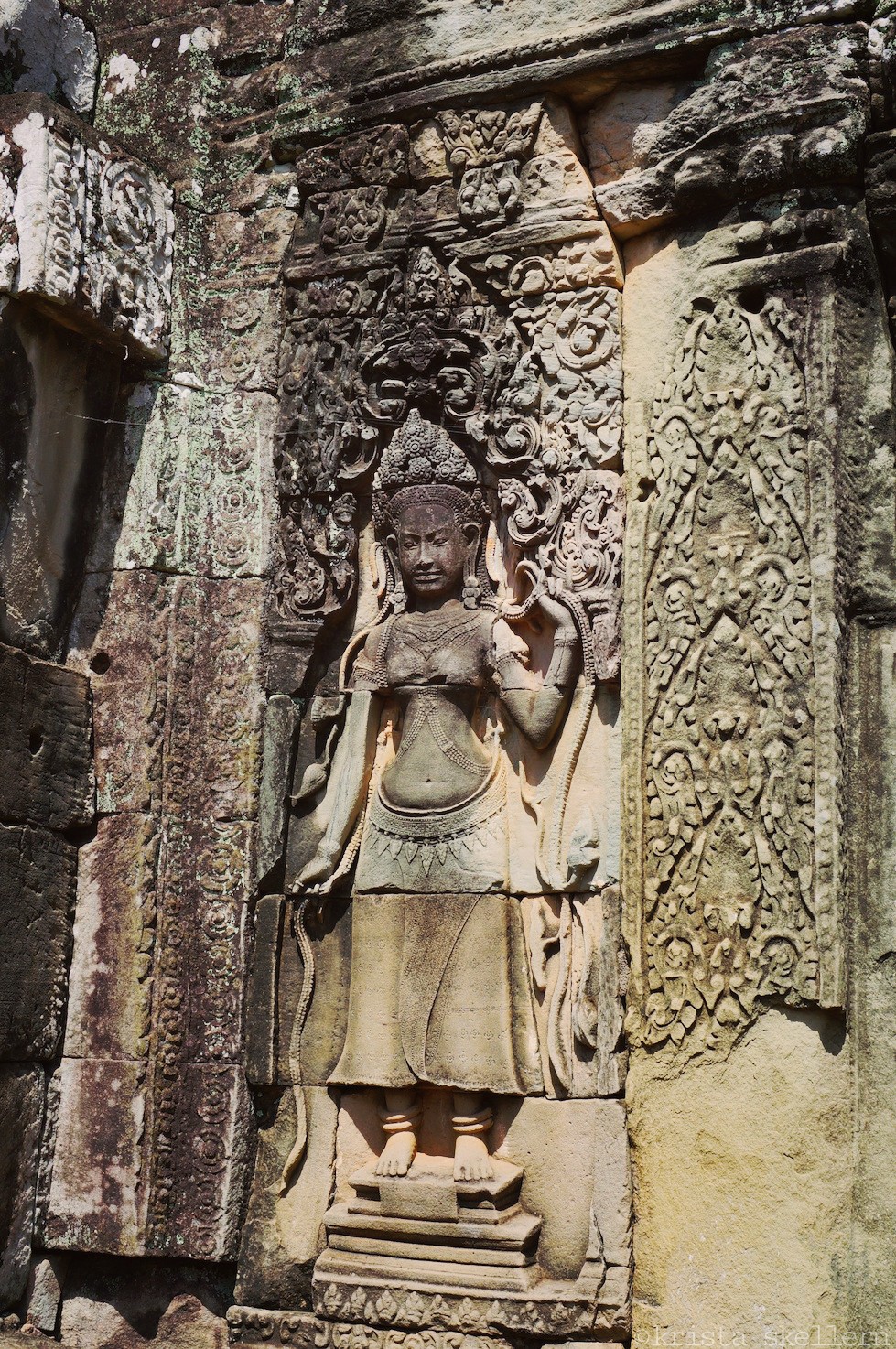
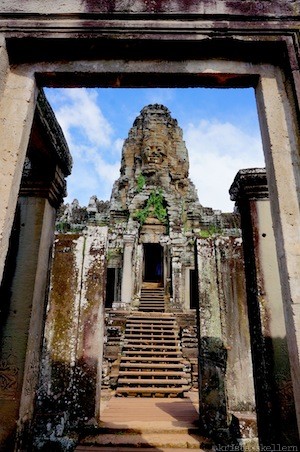
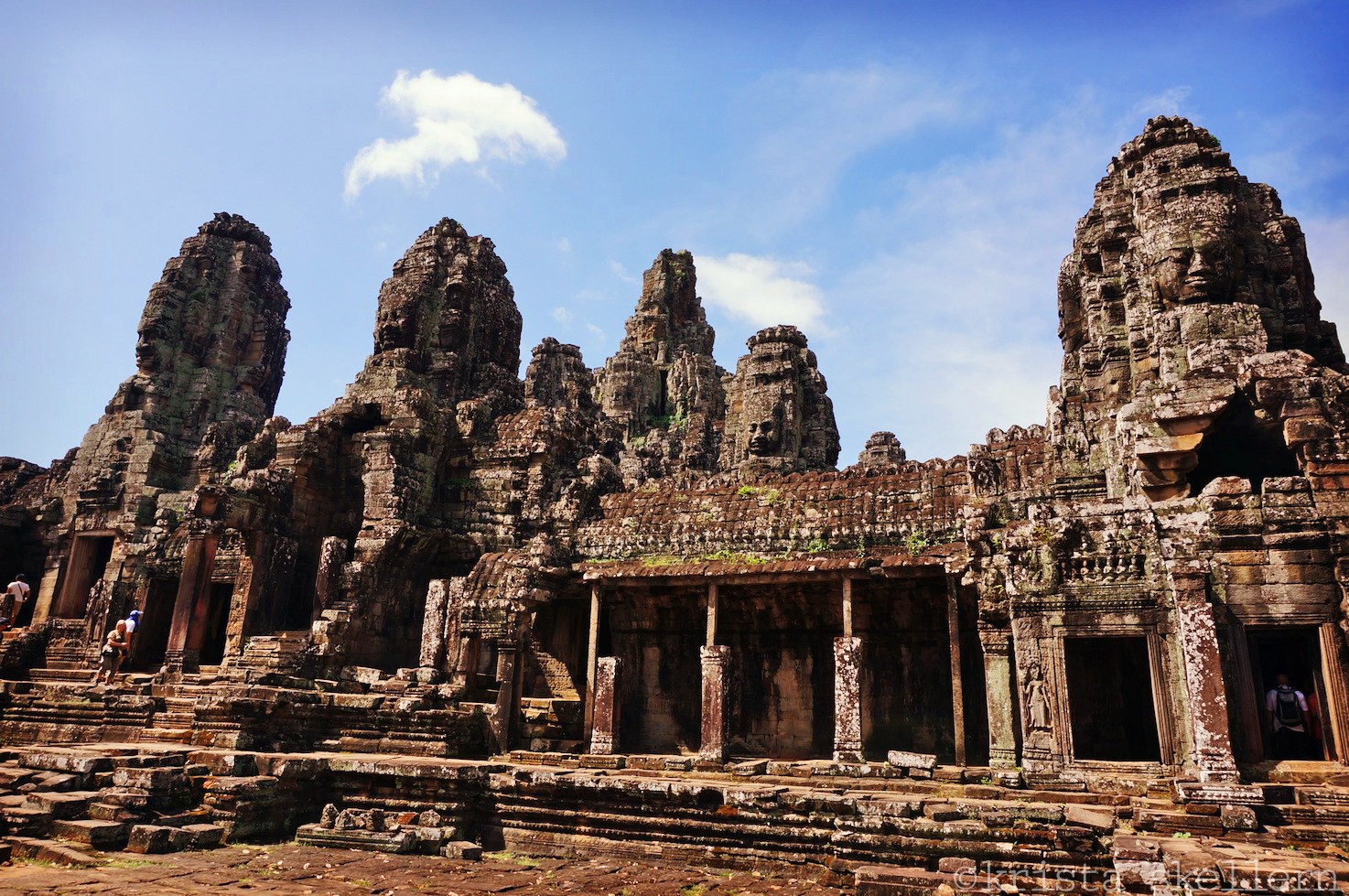
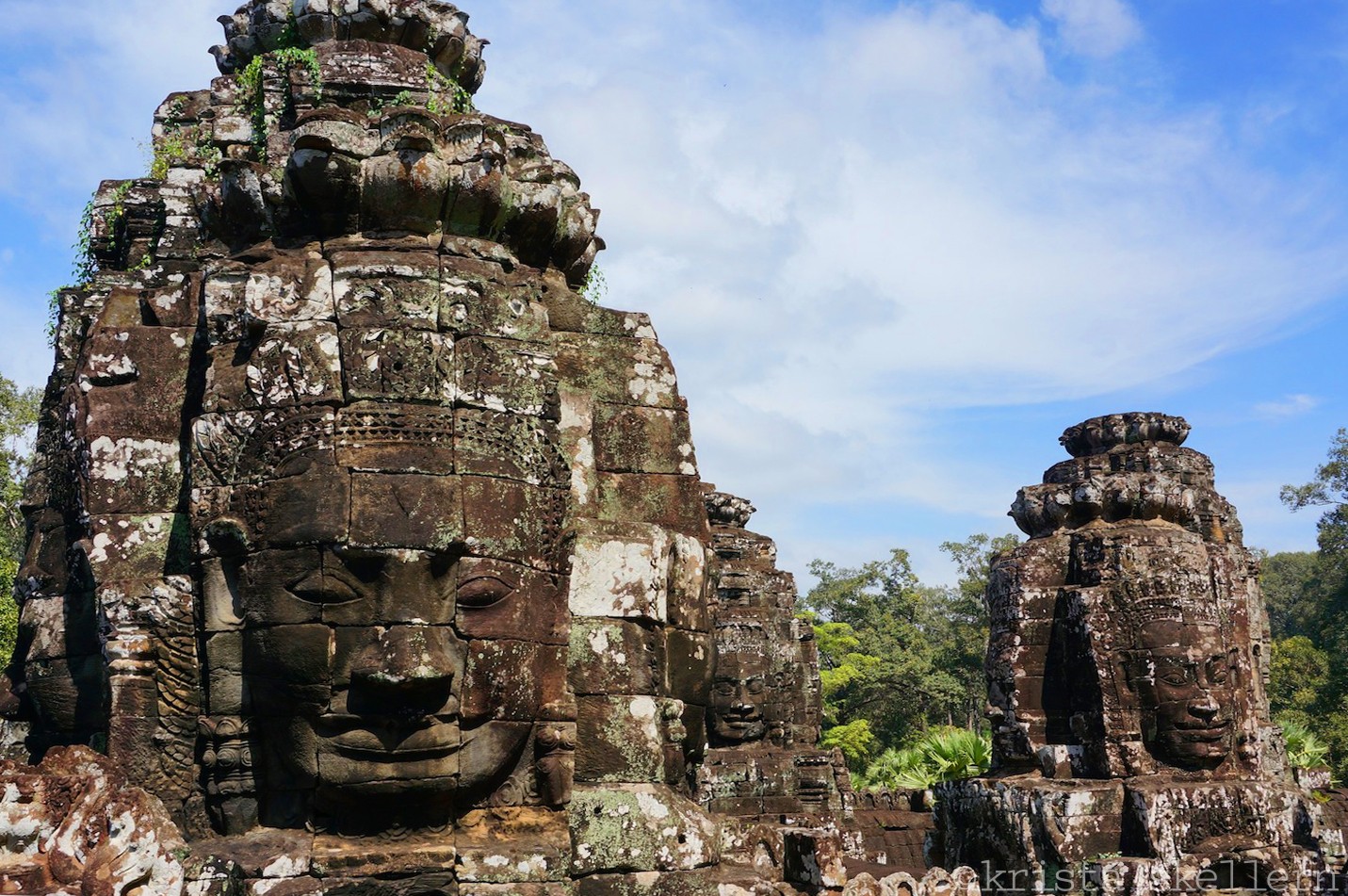
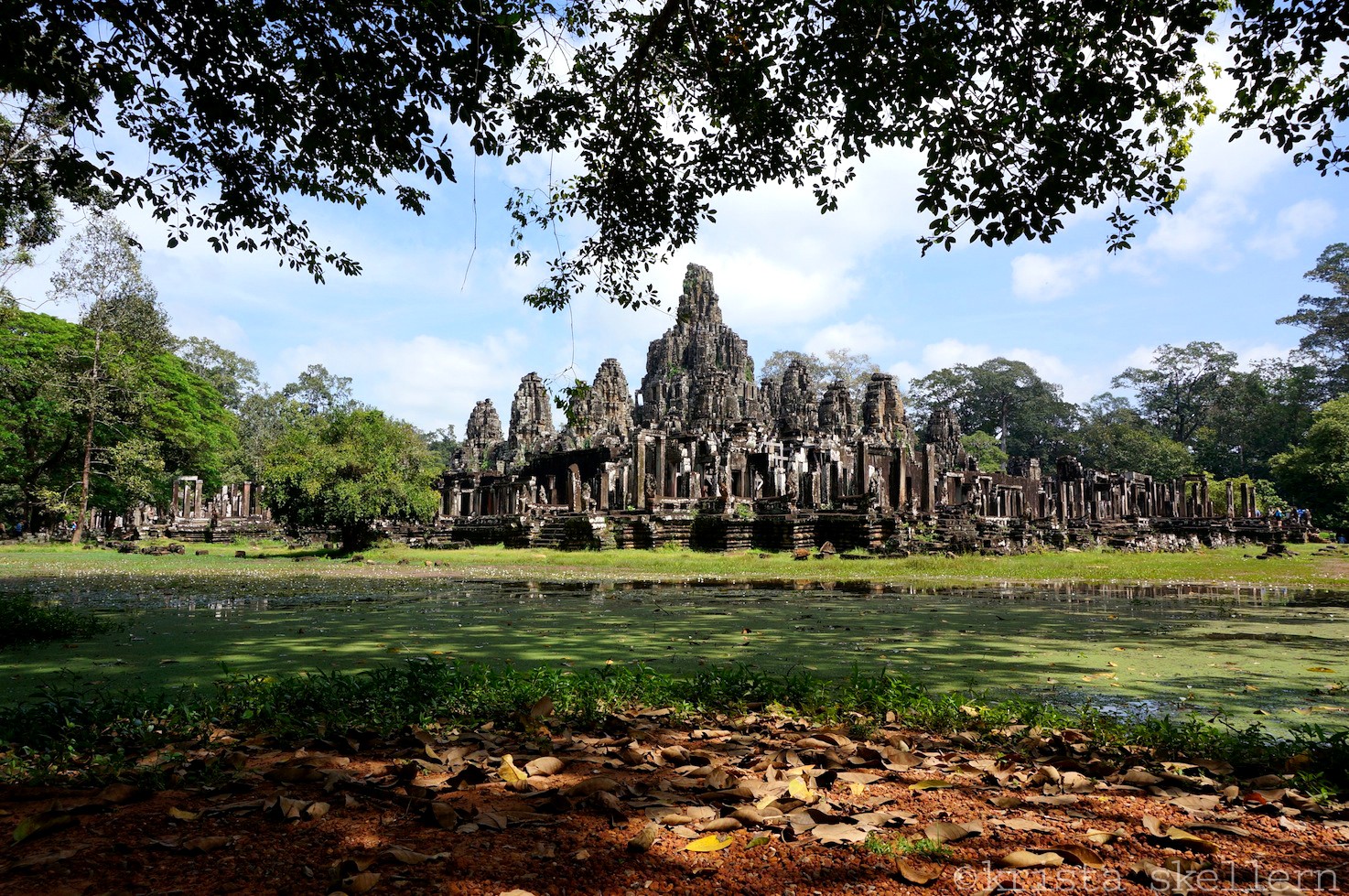
The last temple on the list to visit was Prah Khan, which was built on the site of Jayavarman VII’s victory over the invading Chams in 1191. Like Ta Prohm, this temple has also been left largely unrestored with trees and moss growing over the ruins.
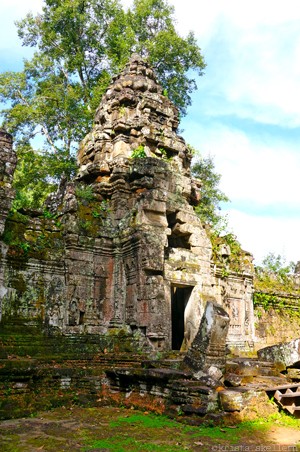
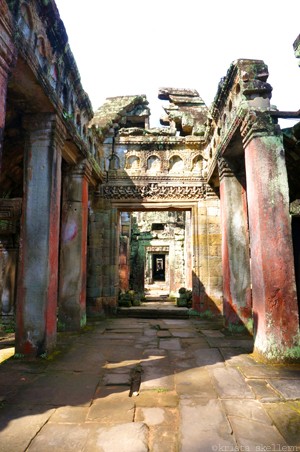
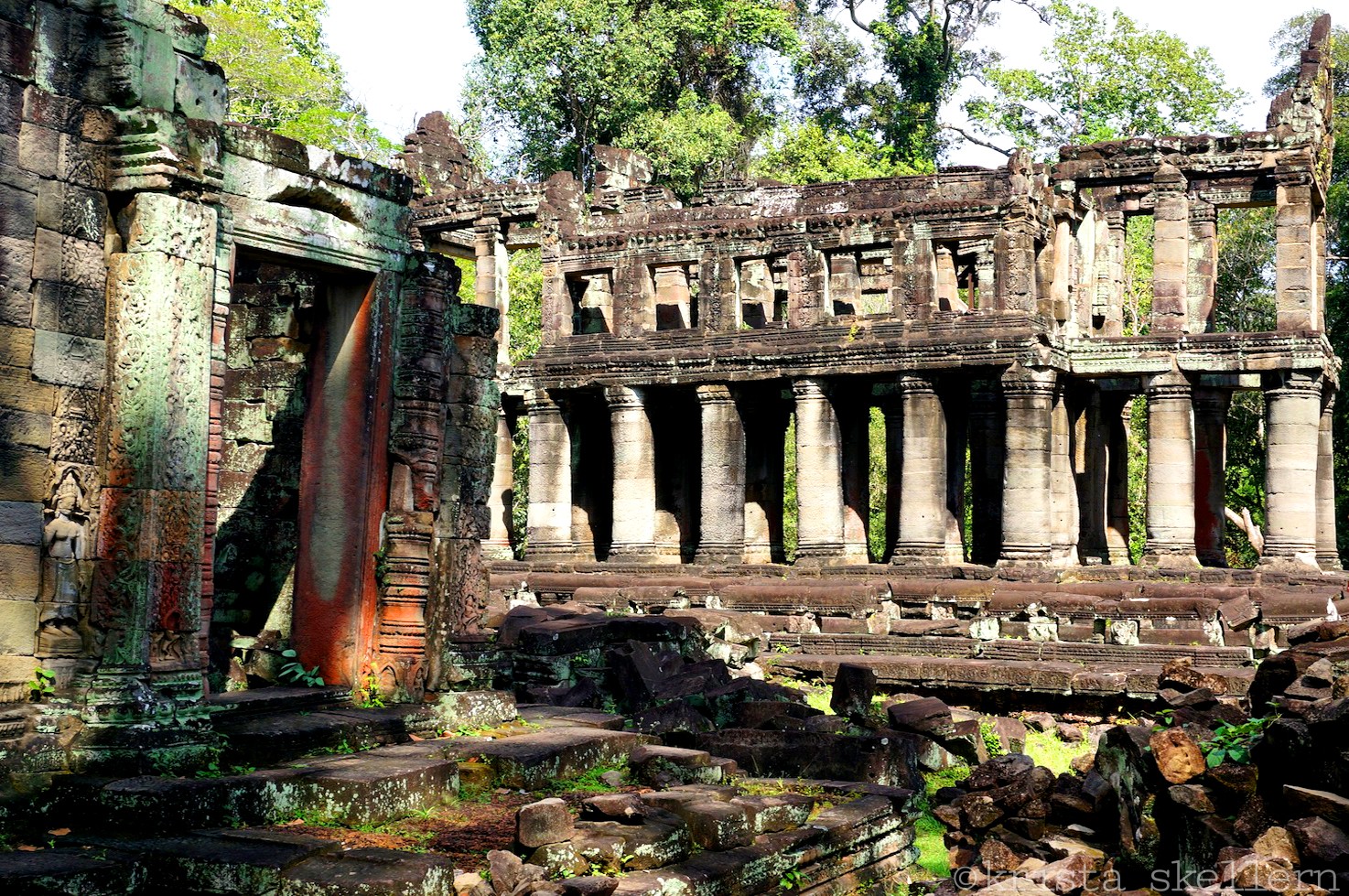

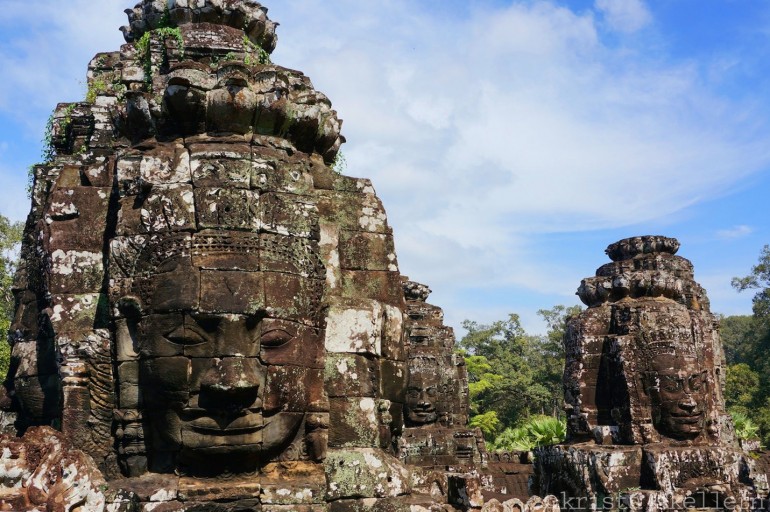
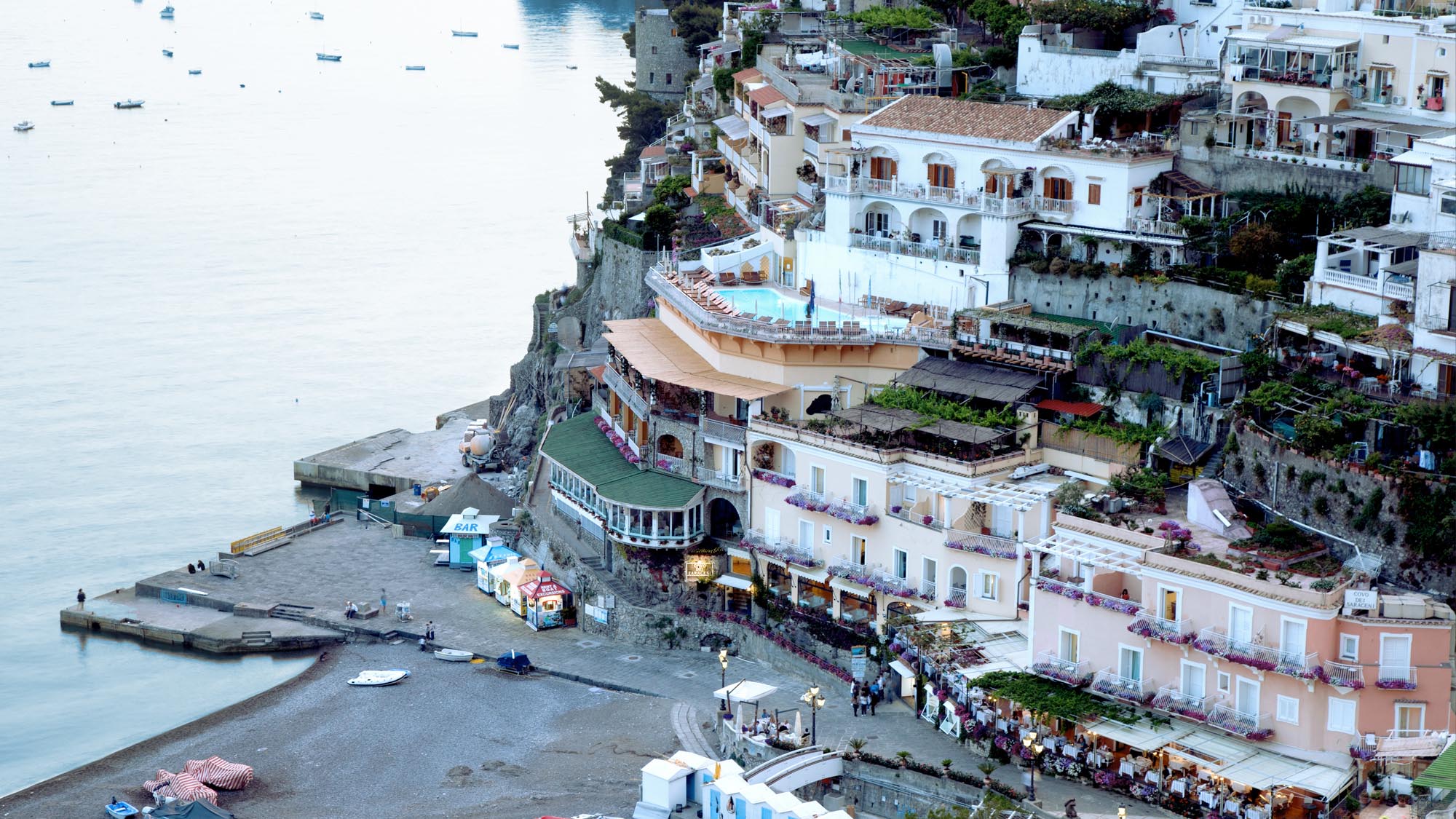
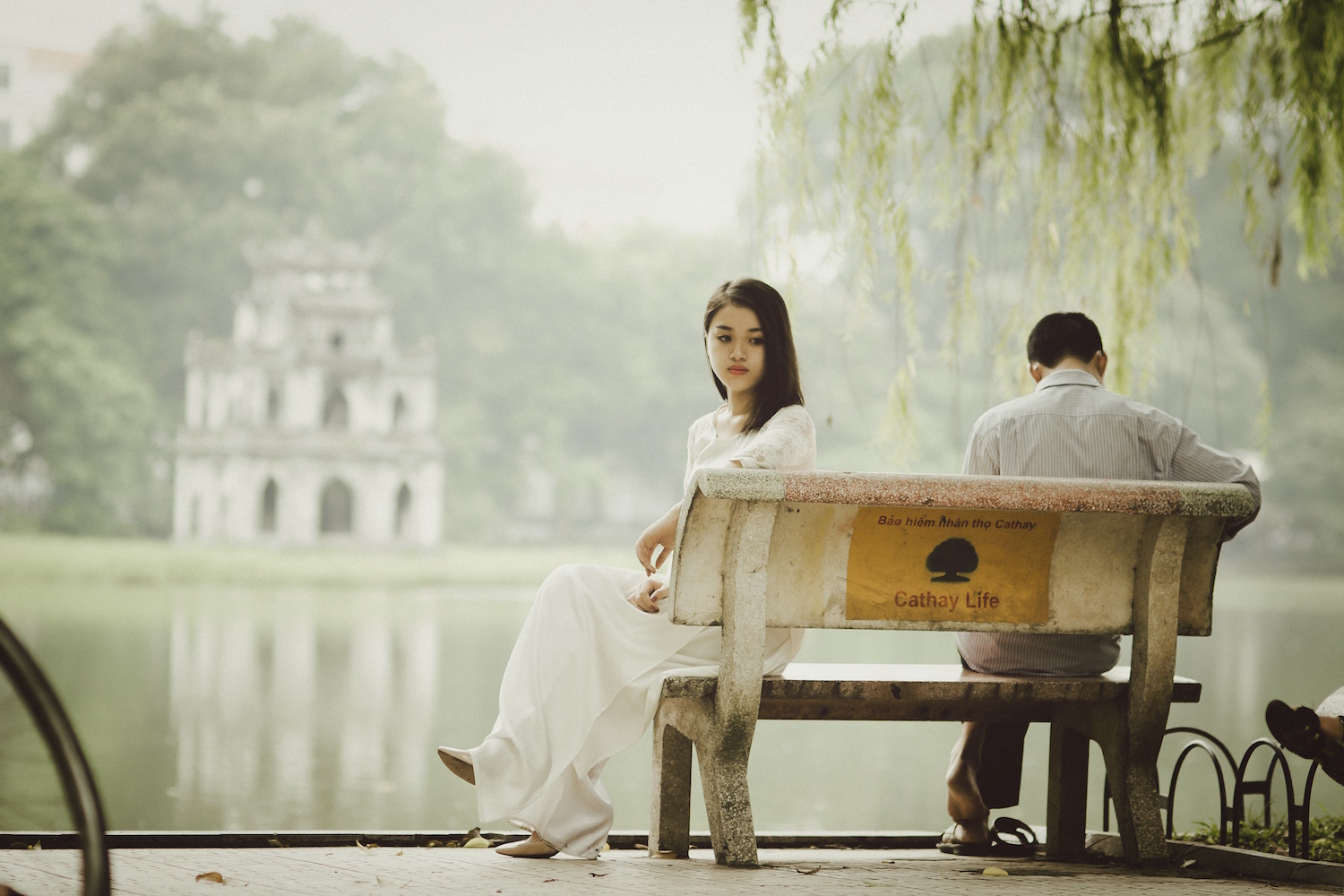
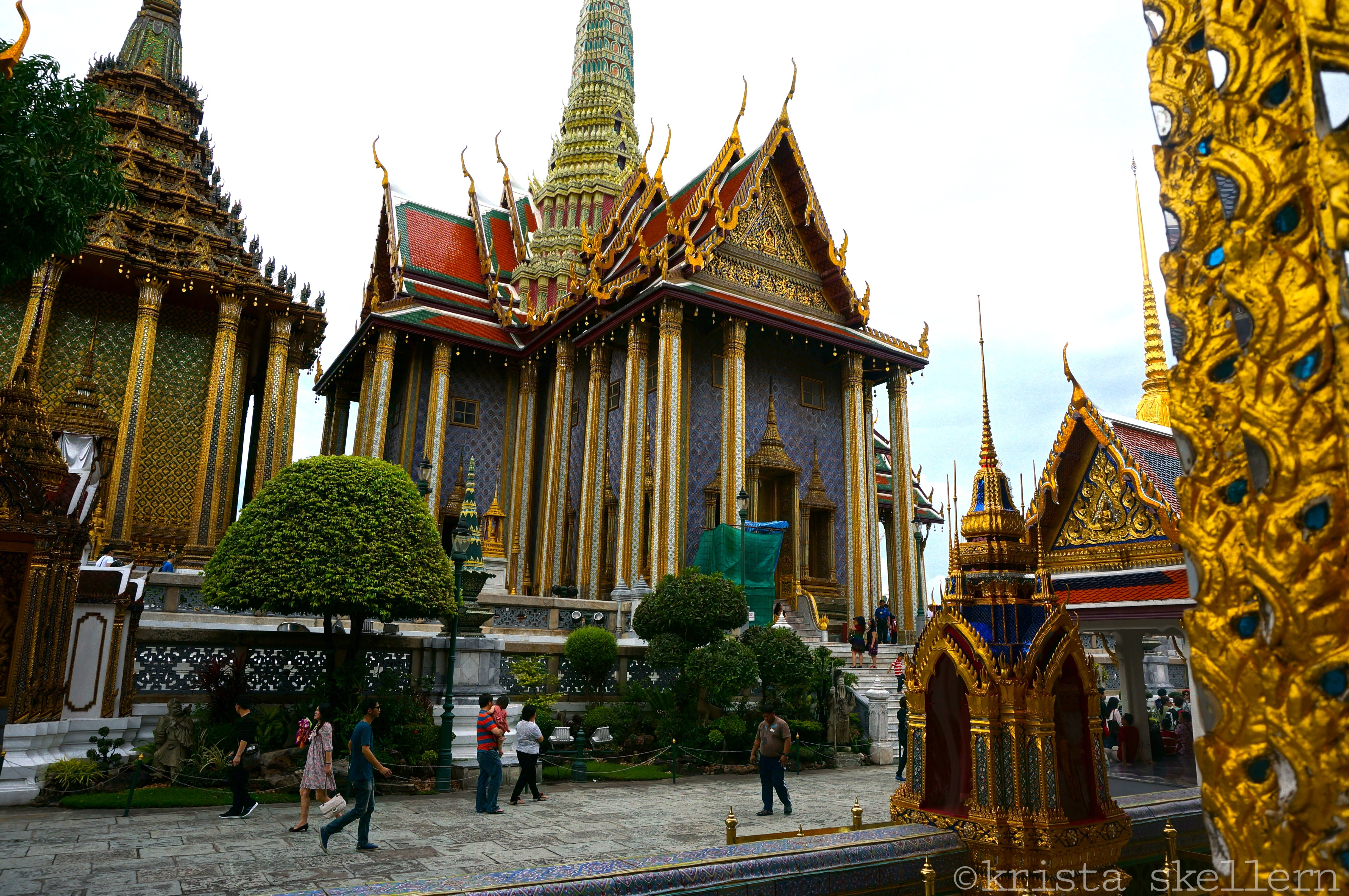

Memories………….And oh the heat! Great post. Great pics.